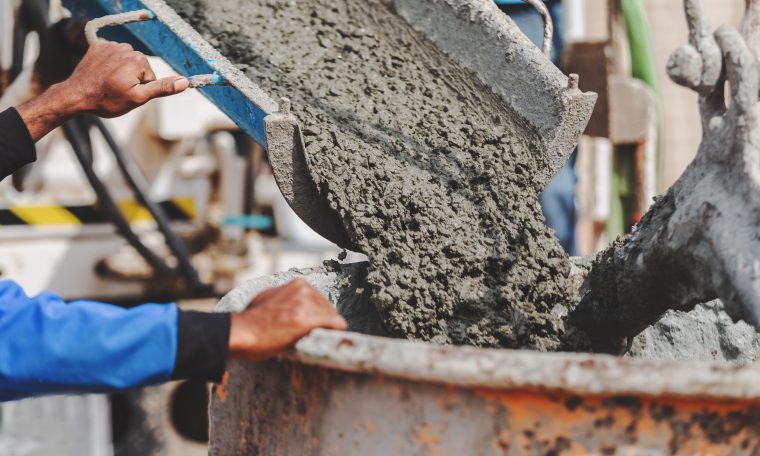
Concrete batching is a fundamental process in construction, laying the foundation for sturdy structures and durable infrastructure. And understanding the techniques and adopting best practices in concrete batching is pivotal for ensuring the quality, strength, and longevity of any construction project. From large-scale commercial endeavors to intricate residential developments, mastering the art of concrete batching guarantees the reliability and stability of the structures we build.
In this guide, we delve into the intricacies of concrete batching, exploring the techniques and uncovering the best practices that professionals in the industry rely on to create a solid foundation for successful construction projects. Continue reading to learn more.
Understanding Concrete Batching
Concrete batching is a systematic process that involves combining various ingredients in precise proportions to create concrete, the versatile building material that forms the backbone of construction projects worldwide. This meticulous procedure entails the blending of cement, aggregates, water, and additives in specific quantities, ensuring a homogeneous mixture that meets the required consistency and strength criteria.
Through meticulous planning and execution, concrete batching transforms raw materials into the robust and versatile substance essential for constructing everything from towering skyscrapers to resilient roadways and foundational residential structures.
Batching Methods
Batching methods in concrete construction encompass diverse approaches aimed at effectively combining the essential constituents required for creating high-quality concrete mixes. These methods range from the widely used volumetric batching, where materials are measured by volume, to the precision-based weight batching, which measures materials by weight for utmost accuracy.
Additionally, advancements in technology have introduced automated and computerized batching systems, streamlining the process and enhancing consistency by meticulously controlling ingredient proportions.
Each method holds its unique advantages, enabling construction professionals to tailor their approach based on project requirements, resources, and desired concrete characteristics.
Best Practices for Concrete Batching
Accurate Measurements
Accurate measurements form the bedrock for reliable and durable structures, thus considered to be among the best practices for concrete batching. It is important to ensure precise measurements of cement, aggregates, water, and additives to achieve the desired concrete consistency, strength, and durability. Even the slightest deviation in measurements can significantly impact the integrity of the final mix, potentially compromising the structural integrity of the construction.
With meticulous measuring techniques, such as using calibrated equipment and adhering strictly to predetermined proportions, construction professionals guarantee the uniformity and quality of the concrete mix, paving the way for resilient and long-lasting structures.
Mix Design
Another effective practice employed in concrete batching would be mix design, which covers the precise selection and proportioning of materials to achieve the desired concrete properties. It involves a careful process of analyzing factors such as project requirements, environmental conditions, desired strength, and durability parameters.
Customizing the mix design to suit specific project needs, engineers and concrete professionals can optimize the blend of cement, aggregates, water, and additives, ensuring that the resulting concrete meets the necessary structural, workability, and durability standards.
A well-crafted mix design not only enhances the performance of the concrete but also contributes significantly to the overall success and longevity of the construction project.
Batching Equipment Maintenance
The maintenance of the batching equipment used in concrete batching serves as another best practice, which ensures the consistent and reliable operation of machinery essential to the process. Regular maintenance routines, including cleaning, calibration checks, and prompt repairs, uphold the efficiency and accuracy of batching equipment. Timely inspections and proactive upkeep not only prevent potential breakdowns but also sustain the precision needed for accurate measurements, safeguarding the quality of the concrete mix.
Techniques for Batching
Separate Weighing
Separate weighing is a technique in concrete batching that involves individually measuring each component of the concrete mix—cement, aggregates, water, and additives—using dedicated weighing systems. This method ensures precision and accuracy by allowing the precise control of each ingredient’s proportion in the mix.
With this technique, construction professionals can fine-tune the ratios of materials, adjusting them as needed to meet specific strength, consistency, and durability requirements for different construction projects.
Sequential Addition
Another strategic technique in concrete batching would be sequential addition, which involves the systematic and controlled addition of materials into the mixing process. With sequential addition, it prioritizes the sequence in which ingredients such as cement, aggregates, water, and additives are introduced into the mixer. By following a predetermined order, construction professionals ensure optimal blending and homogeneity within the concrete mix.
Sequential addition minimizes the risk of inconsistencies and maximizes the effectiveness of chemical reactions between components, ultimately contributing to the overall quality and durability of the concrete. This deliberate approach enables precise control over the mixing process, resulting in concrete that meets stringent performance standards for various construction applications.
Thorough Mixing
Thorough mixing also stands as a crucial technique in concrete batching, which emphasizes the precise blending of ingredients to achieve a uniform and consistent concrete mix. This technique ensures that all components, including cement, aggregates, water, and additives, are intricately combined to form a homogeneous blend, free from clumps or variations.
Through robust mixing actions, whether through drum mixers, pan mixers, or other specialized equipment, construction professionals facilitate the even distribution of materials, enhancing the concrete’s strength, workability, and overall quality.
Environmental Considerations
It is also important to consider the environmental effects of concrete batching in today’s construction landscape. The production of concrete involves significant energy consumption and raw material extraction, impacting the environment through carbon emissions and resource depletion. However, implementing eco-friendly practices like using supplementary cementitious materials, recycling aggregates, and reducing water consumption can significantly mitigate these effects.
Furthermore, embracing innovative technologies such as carbon capture and utilization, as well as exploring alternative binders, further minimizes the environmental footprint of concrete production. As sustainability in concrete batching is prioritized, the construction industry can strive towards reducing its environmental impact while still delivering robust and enduring structures.
Key Takeaway
Mastering the art of concrete batching through a comprehensive understanding of techniques and best practices is fundamental in ensuring the success of construction projects. And by adhering to these techniques and best practices, construction professionals can forge a solid foundation for structures that stand the test of time, embodying strength, resilience, and reliability. This guide serves as a compass, steering the path toward excellence in concrete batching, empowering builders to create the sturdy infrastructure that shapes our world.



